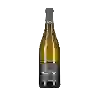
Chateau BoucheMacaron Vaucluse Principauté d'Orange
This wine generally goes well with
Details and technical informations about Chateau Bouche's Macaron Vaucluse Principauté d'Orange.
Discover the grape variety: Delrho
Intraspecific crossing obtained in 1959 between Alphonse Lavallée and Csaba pearl. Delrho has been registered in the Official Catalogue of Table Grape Varieties, list A1, since 1986, but today it is practically not multiplied.
Informations about the Chateau Bouche
The Chateau Bouche is one of wineries to follow in Vaucluse.. It offers 12 wines for sale in the of Vaucluse to come and discover on site or to buy online.
The wine region of Vaucluse
The wine region of Vaucluse is located in the region of Méditerranée of Vin de Pays of France. Wineries and vineyards like the Domaine Chêne Bleu or the Domaine Chêne Bleu produce mainly wines red, white and pink. The most planted grape varieties in the region of Vaucluse are Viognier, Merlot and Cabernet-Sauvignon, they are then used in wines in blends or as a single variety. On the nose of Vaucluse often reveals types of flavors of earthy, blueberry or dried herbs and sometimes also flavors of savory, anise or cinnamon.
The wine region of Méditerranée
Méditérranée is a PGI title that covers wines produced in a large area of the South-eastern coast of France, roughly corresponding to the wine region of Provence but also including Part of the Rhône Valley. The PGI shares its territory with multiple AOC appellations as varied as Châteauneuf-du-Pape, Bandol and Côtes de Provence. The PGI Méditérranée catchment area extends over 10 departments (including the two on the island of Corsica), as well as smaller parts of the Isère, Loire and Rhône departments. Viticulture is essential to the culture and economy of this part of France.
The word of the wine: Friand
A light, easy-drinking wine with an immediate and fresh fruitiness.














